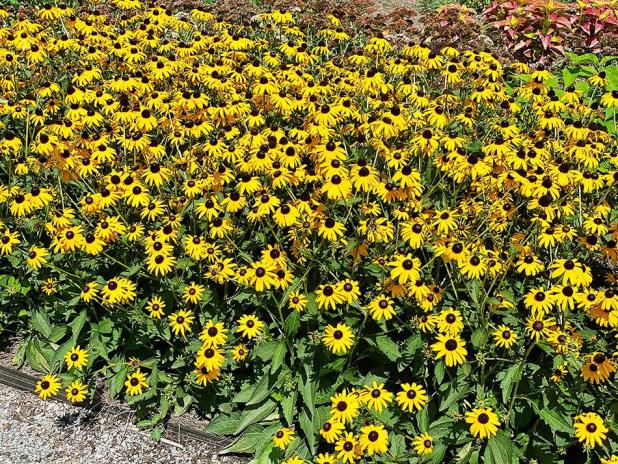
Perennials are low maintenance and cost effective because they come back year after year.
—LSU AgCenter/Heather Kirk-Ballard
Get It Growing: A place for almost every plant
Spring is here, and it’s time to get into the garden. Annuals, perennials, vines, groundcovers, shrubs, trees, fruits and veggies — oh my! With so many plants to choose from, where do we start? Well, just about every plant has potential in the garden, and springtime is a good time to get them in the ground.
When selecting plants for the landscape, you should consider not only the function the plant will serve but also the needs of the plant. This includes preferred temperatures, amount of sunlight, preferred soil type and pH and water needs.
Our plant selection options are narrowed down based on our local temperatures, annual rainfall and average light for our area. That puts Louisiana in USDA hardiness zones 8a to 10a.
What is a hardiness zone? This system was created by scientists from the United States Department of Agriculture to help categorize regions of the United States and Canada according to their climate conditions.
The zones supply information on the average minimum temperatures of a region during the winter months to help farmers and gardeners decide which plants will survive and thrive in each area. Today, there are 13 zones in total, ranging from 1 (coldest) to 13 (warmest). Each zone is separated by a 10-degree Fahrenheit difference in average annual minimum temperatures, and each zone is further divided into subzones (‘a’ and ‘b’) based on minor climatic variations.
This puts us in a nice place to live, with a year-round growing season for some plants. As we plant for the spring, let’s start with annuals. These types of plants can supply the best color in the landscape. They are called annuals because they complete their life cycle from seed to flower to seed in one growing season and then die.
Annuals provide an opportunity for inexpensive, instant color with long blooming periods. They are the go-to category of plant when wanting to make an impact with flower power and color in the landscape. They are effective but require a bit more maintenance than other landscape plants in that they typically require more frequent fertilizer applications and removal of spent flower blooms, or deadheading, to keep up their colorful show. Vegetables fall into the annual category of plants.
There are both cool-season and warm-season annuals. This distinguishes the time of year during which they are most successful. Cool-season annual plants grow best in temperatures of 60 to 75 degrees, preferring the cooler weather of the spring, fall and winter. These plants include common bedding plants such as dianthus, pansies, petunias and snapdragons. Plant breeding has led to improved cultivars that can tolerate more heat to extend the life of the plant. Look for plant labels that advertise heat tolerance.
Warm-season annual plants grow best in temperatures of 70 to 90 degrees and like hot weather in the summer. They bloom from late spring until first frost. These plants include popular flowers such as begonias, impatiens, marigolds, vincas and zinnias.
Another group of plants commonly used in landscapes are perennials. Perennials are defined as a plant that lives more than two years. Because the plants come back year after year, that means you don’t have to replant annually. Perennials typically require less effort and time compared to annuals. Perennial plants sometimes cost more up front, but they can save money in the long run because they don’t require replanting and they mature and spread over time.
In addition to being lower maintenance and cost effective, perennials can provide food and shelter for beneficial insects, pollinators, birds and other small wildlife, enhancing ecosystem services. Perennials provide seasonal interest of various blooms, colors and textures throughout the growing season, providing long-lasting interest to the garden.
Vines and groundcovers are another plant type to consider when planting this spring. Take advantage of their unique growth habits. With their vertical growth habit, vines draw the eyes upward in the landscape. Vines should be supported with trellising or grown along sturdy fence lines. Groundcovers can be an excellent option to cover larger areas with their trailing, spreading habit. They create excellent borders in landscape beds and can be used as a grass alternative for lower-maintenance lawns. That means time and cost savings.
Whatever you do this spring, try something new. Get out there and “Get It Growing.”
